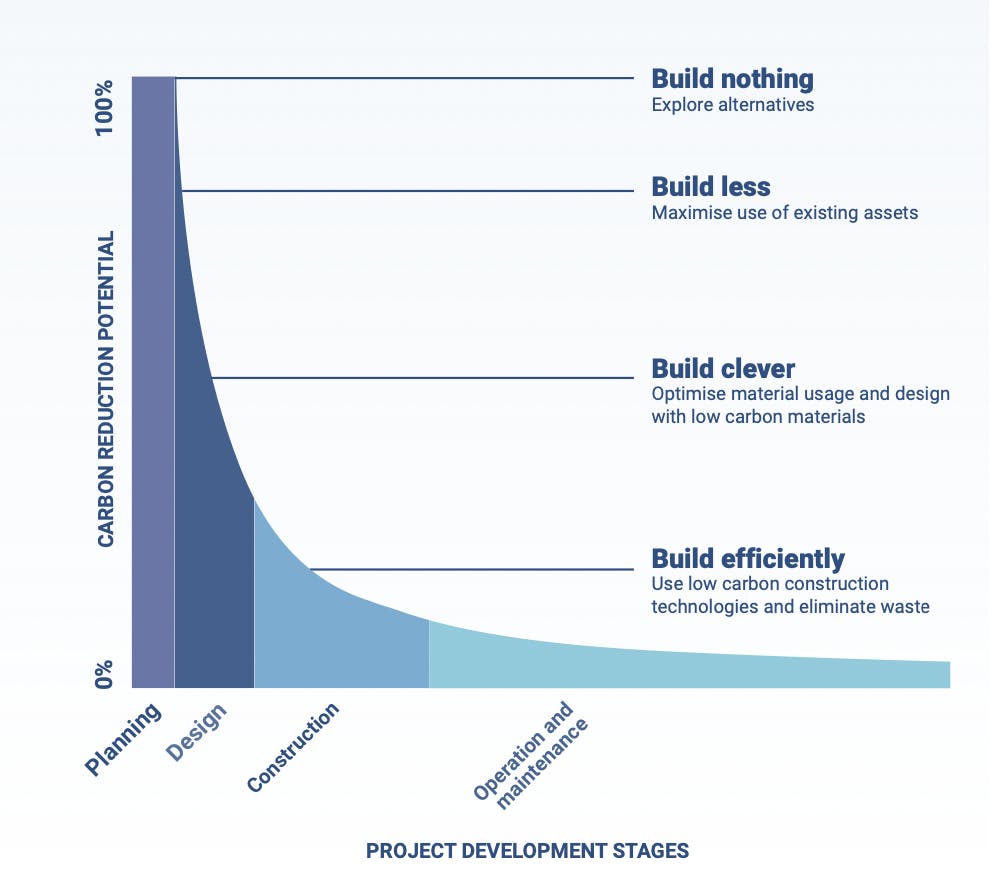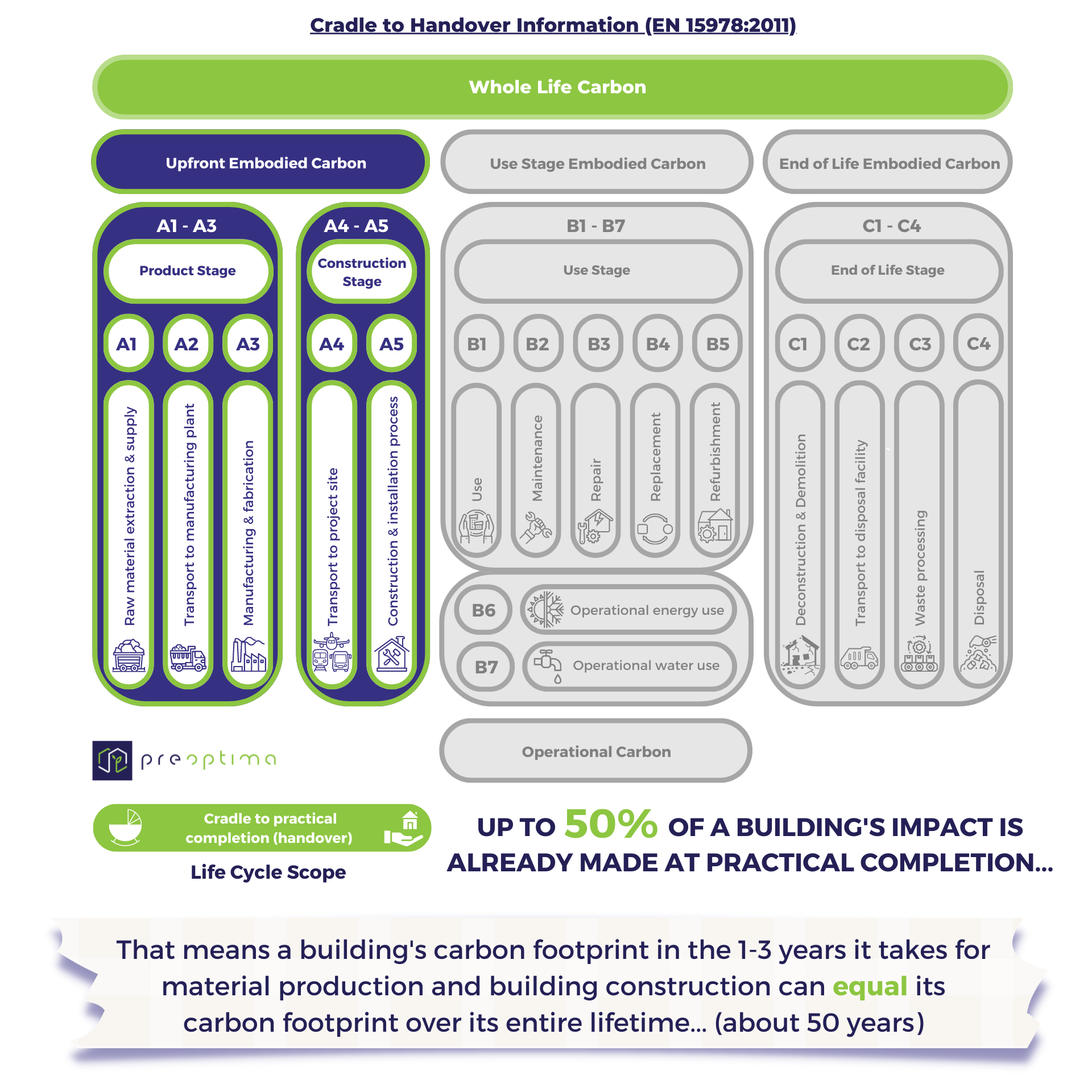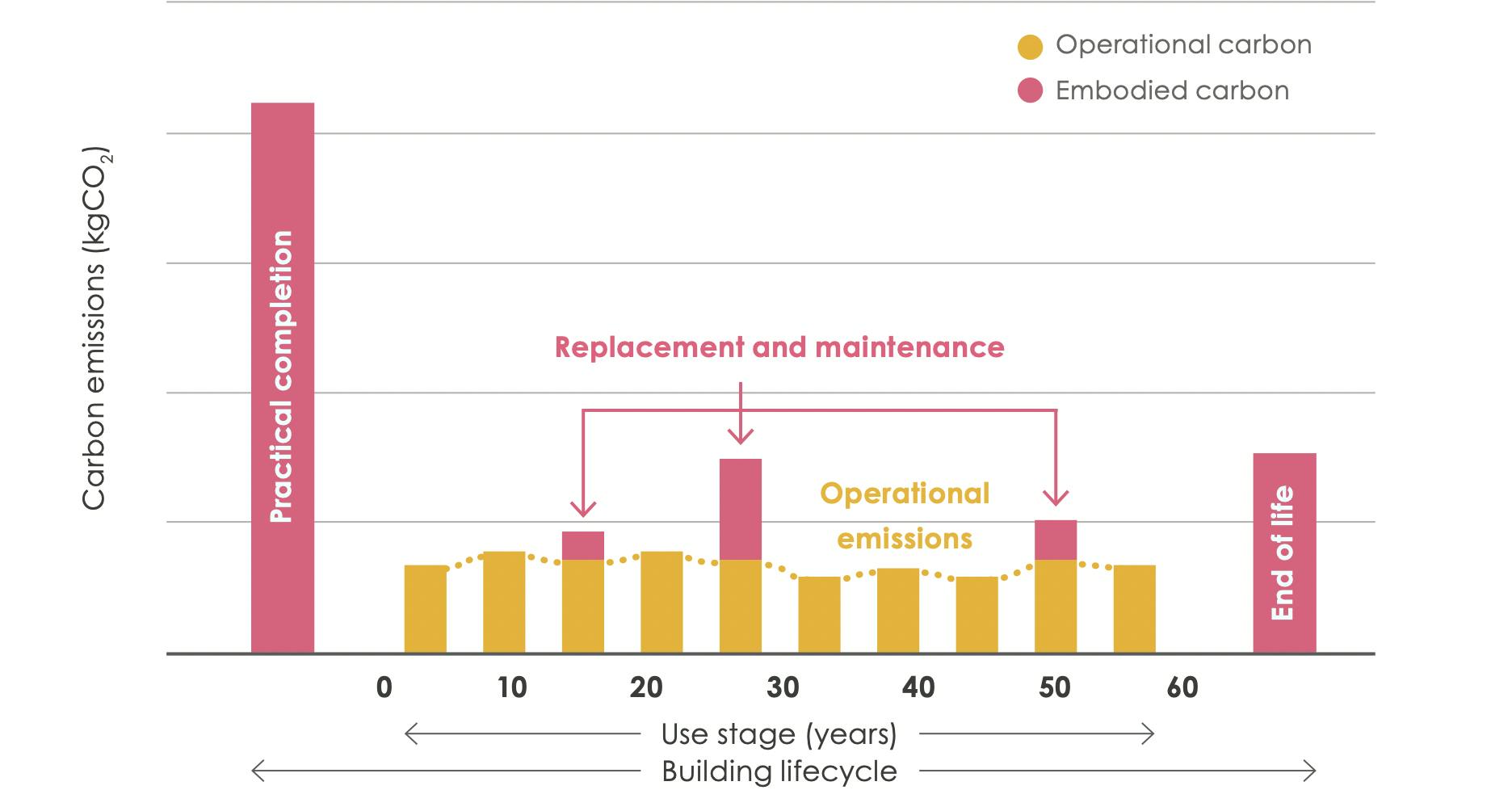Covering Embodied Carbon Series
Covering Embodied Carbon: when can I reduce it?
Read Time 5 mins | Written by: Alex Bantock
TL;DR
- The World Green Building Council (WGBC) states that the planning stage of a building project is the most critical time for carbon reduction, with carbon reduction potential exponentially decreasing over time
- LCA tool/services should ideally be used as early as possible in the planning and design stages and continually be used to recheck, compare, and adjust numbers up until practical completion
Given the increasing number of reports that paint a very bleak picture of our future, such as the IPCC Climate Change 2022 report or the U.S. National Climate Assessment report, we can see that immediate decarbonisation is crucial. However, whilst this is important to know, it is not particularly helpful for us in the built environment… What is helpful is knowing when in the building project development stages you will have the greatest carbon reduction potential - and that is as early as possible!
The World Green Building Council (WGBC) states that the planning stage of a building project is the most critical time for carbon reduction, with carbon reduction potential exponentially decreasing over time. Our previous posts have also shown that the majority of a building’s carbon impact is made before practical completion and is embodied into the building. Therefore, if building new, it is important to perform building impact analyses in the planning and early design stages to ensure that the full benefits of building less, building clever, and building efficiently can be realised and that embodied and operational carbon can be fully optimised.

See source: WGBC - Bring Embodied Carbon Upfront
When to use carbon assessment tools
Knowing when to reduce embodied carbon is only part of the puzzle, with the questions of “when” and “how” being tightly interlinked. Knowing how to mitigate carbon requires data from Life Cycle Assessment (LCA) or Whole Life Carbon Assessment (WLCA) tools. Despite there being a fair few LCA tools on the market, not all of them are the same and they particularly differ in terms of the project development stage at which you can use them. Therefore, when choosing which software tool to use, the temporal factor of carbon reduction must be front of mind!
At preoptima, we have gleaned from conversations with design professionals in the industry that whilst embodied carbon frequently features in building design criteria, it is often briefly mentioned during the feasibility stage and is then quick to take a back seat until later in the design process. This is when the majority of LCA tools are used, during late-stage design when substantial time and resources have already been invested and the capacity to make a meaningful reduction in embodied carbon is drastically reduced. This makes achieving carbon targets a lot more difficult and requires numerous design iterations and re-analyses to get ‘right’.
For example, your feasibility study and proposal for an office block has been accepted by your clients and you go on to create the more technical designs using a building information modelling (BIM) software. Having considered and included typical sustainable design recommendations, such as improving energy efficiency through orientation, solar gain, form, renewable energy, etc., you are happy with the results. To comply with regulations and the client’s wishes to see the carbon impact of the building, you hire an external consultant to perform a LCA on your current design. Much to your surprise, you see that despite the operational carbon of the building being fairly low, its embodied carbon far exceeds your set targets, requiring multiple changes across the entire design. Seeing that your choice of concrete and raised access floor systems accounts for a large portion of the embodied carbon is a problem as changes to those carbon hotspots will require alterations to major aspects of your building such as massing, building services, etc. In all, the use of an LCA software so late in design has created more headaches than solutions and you will have to spend a lot more time and resources correcting your design.
It is clear that LCA tool/services should ideally be used as early as possible in the planning and design stages and continue to be used to recheck, compare, and adjust numbers up until practical completion. The ‘as-built’ embodied carbon values obtained at practical completion are beneficial for comparison with early-stage assessments and can be used to improve practices and create benchmarks. If you would like to see how preoptima saves you time, money, and carbon by solving the temporal aspect of carbon reduction for you, check out our preoptima: your time, money, and carbon solution blog post or contact us at info@preoptima.com to speak to one of our team or receive a demo.
We'd love to hear from you!



